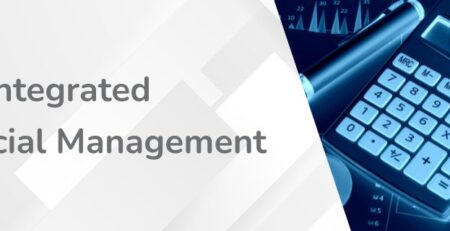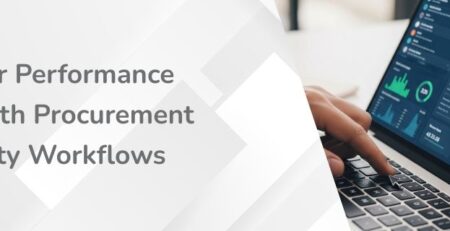The Currency Rollercoaster: Why Manufacturers & Distributors Break Out in a Cold Sweat
In cross-border manufacturing and distribution, currency fluctuations are not some distant macro issue you read in the news — they punch your P&L, your cash flow, and your sanity.
Here’s how the volatility bites:
Cost variability & margin erosion
If your domestic currency weakens, imported raw materials, components, or machinery suddenly get more expensive. Your cost of goods sold (COGS) jumps. If you try to push that cost to customers (especially international ones), your pricing competitiveness may slip. Conversely, if your currency strengthens, your exports might look overpriced overseas, forcing price cuts and shrinking margins.
Forecasting and budgeting nightmares
When exchange rates bounce unpredictably, your revenue and cost forecasts can be wildly off. Cash flow becomes jagged. What looked like “safe to invest” this month might turn risky next quarter.
Transaction risk / settlement timing
Between contract sign-off and payment (especially in foreign currency), the rate can move against you. If you agreed to sell at USD or EUR but settle weeks later, losses may creep in.
Structural & portfolio risk
If your inflows (exports, foreign customers) and outflows (raw materials, logistics) are misaligned in currency, you build exposure. Your balance sheet and net cash flows can suffer. Subsidiaries operating in local currencies add complexity to consolidation and valuation.
Supply chain & transaction cost volatility
Freight, shipping, tariffs, import duties — many of these are priced in foreign currency or tied to foreign contracts. A currency move can intensify supply chain cost unpredictability, squeezing already tight margins.
But wait — currency swings also offer opportunity, if you’re ready:
- Export competitiveness boost. A weaker home currency can make your products more affordable overseas. If you time it well, you can win market share.
- Strategic timing. If you have real-time data or hedging ability, you can choose when to pay or convert to exploit favorable moves.
- Hedging & risk management. Forward contracts, options, and dynamic hedging let you lock in rates or dampen volatility. If properly managed, currency exposure becomes controllable rather than fearsome.
So the challenge (and the opportunity) is: can your systems and processes cope — in real time — with the FX shock waves?
Where ERP Enters the Fray: Why You Need More Than Spreadsheet Hocus-pocus
When currency is your wild variable, a good ERP is not a luxury — it’s a survival tool. The classic benefits apply, but with currency volatility they become mission-critical:
Automated real-time currency conversion
No more manual lookups or stale rates. Your ERP can fetch current exchange rates from trusted sources (e.g. central banks, FX providers) and apply them automatically to invoices, journal entries, costing, and reporting.
Multi-currency financial reporting & consolidation
If you run multiple subsidiaries across borders, your ERP can roll up their transactional books (in local currencies) into a single “reporting currency” view. You get visibility into consolidated metrics while retaining local detail.
Improved cash flow / risk management
With a unified system, you see receivables, payables, and exposures by currency. You can time conversions or payments, run “what if” scenarios if rates move 2–3 %, and proactively manage risk.
Operational efficiency & reduced error
Manual currency conversions, ledger entries, reconciliation mismatches — those are error magnets. Automation speeds throughput, lowers headcount burden, and reduces surprising “oops we mis-booked that” events.
Compliance, audit & tracking of currency gains/losses
Many jurisdictions demand that gains or losses from currency movements be tracked in your financials, disclosed in reports, or taxed differently. With audit trails, revaluation routines, and currency gain/loss posting, an ERP helps you stay honest and auditable.
In volatile times, those aren’t “nice-to-haves” — they become your defense against margin erosion, reporting gaps, and forecast shock.
Why Epicor Kinetic Is a Great Fit When Currency Swings Get Ugly
If you’re considering ERP to manage currency volatility, Epicor Kinetic deserves serious attention. Here’s how and why (with some crunchy commentary):
Built-in Global & Multi-Currency Capabilities
- Kinetic supports multi-site, multi-company, multi-currency, and multi-language operations out of the box.
- The system’s Global Business Management capabilities let you centralize financial consolidation while respecting local legal and currency peculiarities.
- You can define currencies at the level of sales orders, purchase orders, invoices, payments, and general ledger journals. The system converts amounts using defined exchange rates (daily rate, spot, etc.).
- It offers revaluation processes for foreign currency accounts, so you can recognize gains or losses at period end.
Flexible “Engines” & Automation
- Kinetic has configurable global engines — for currency, rounding, allocations, postings — which let you automate the mechanics of currency conversion and reconciliation.
- The system integrates with FP&A and predictive analytics, enabling scenario modeling (what if the USD weakens 5 %) and helping you forecast the FX impact across units.
- Because many tasks are automated, your finance team spends less time juggling Excel formulas and more time interpreting meaning.
Country-Specific & Compliance Support
- Epicor Kinetic provides Country Specific Functionality (CSF) packages for over 30 countries, which help you comply with local accounting, tax, e-invoicing, currency regulation, and reporting requirements — all while preserving a uniform user experience.
- That means less “special handling” or heavy custom code when you expand to new markets.
Scalability & Cloud Upgrades
- As your currency exposure or footprint grows, Kinetic scales. You get upgrades, security, and maintenance in the cloud environment without breaking your customizations.
- Intercompany transactions (e.g., internal transfers across subsidiaries in different currencies) and consolidation are built into the system.
Credibility & Depth
- Independent comparisons rate Kinetic as supporting all 35 of 35 features in the “Multi-Currency & Global Operations” module — in contrast to many competitors with partial support.
- Analysts frequently cite Kinetic as “ERP built for global manufacturers” with strong cross-currency capabilities.
In short: when currency volatility becomes a monster, Kinetic gives you armor, not just a bandaid.
How to Position This in Your Data V Tech Offerings
At Data V Tech Solutions, the pitch to manufacturers and distributors should be something like:
- “We help you tame currency volatility using Epicor Kinetic + Data V Tech’s expertise.”
- Your differentiator: you don’t just implement ERP; you help configure the FX engines, hedging workflows, alerting, scenario dashboards, and train finance teams to exploit favorable currency moves — not just survive them.
- You can package template configurations (for ASEAN, Europe, US) for currency risk workflows — so clients don’t build from scratch.
- Use real client stories: e.g. “When the USD weakened 8 % mid-quarter, client X gained extra margin by shifting certain contract settlements and our built-in alerts flagged exposures.”
- Emphasize ROI: fewer surprises, more stabilized forecasts, lower risk of margin bleed, faster month-end, and better expansion readiness.












